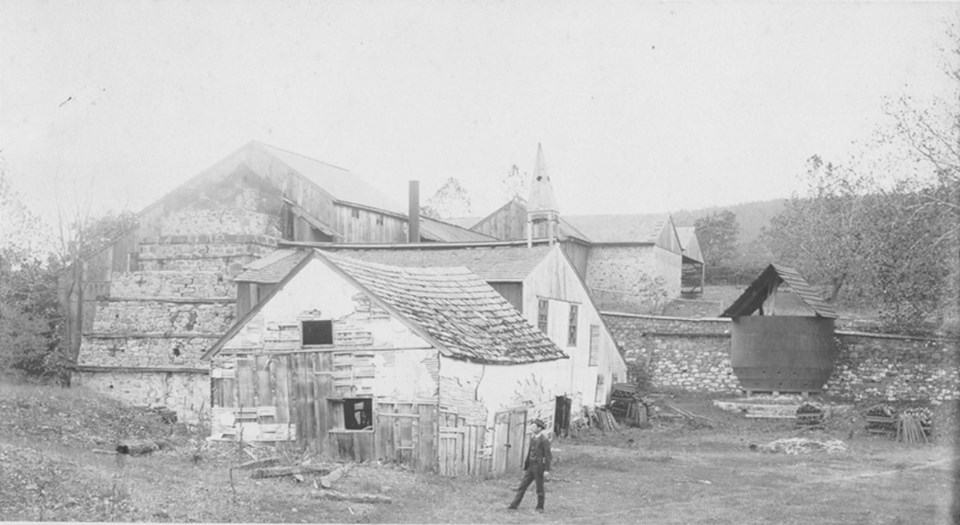|

Pennell, Joseph, Artist. Bethlehem Steel Works. Bethlehem Pennsylvania, 1881. May. Photograph. https://www.loc.gov/item/97517130/ The Industrial Revolution refers to the period between 1760 and 1840 that changed manufacturing processes in Europe and the United States. Products formally made by hand were now being produced in mass quantities with new machines and techniques. These changes transformed rural and agricultural societies into urban and industrialized societies. Hopewell Furnace, an early iron making business, tried to adapt with the new methods of production, but simply could not keep up with the changing industry. 
Photo courtesy NPS VIP Anika Christman The furnace company at Hopewell Furnace largely utilized a cold blast furnace to produce iron from c.1771 to 1883. This method of iron production required the use of charcoal to fuel the furnace, which was labor intensive and demanded an abundant supply of wood. During the Industrial Revolution, many in the iron industry changed their fuel source from charcoal to coke and coal. Coke and coal were more abundant and less labor intensive to obtain. Beginning in 1853, Hopewell briefly used an anthracite coal furnace. In less than 4 years, however, the furnace company reverted to its cold blast furnace because of the high cost in transporting coal. 
NPS Photo Innovations in steam power provided a reliable and efficient means of power. Before the creation of the steam engine, most industrial power was supplied by water and wind. Hopewell Furnace, for example, used a water wheel that was dependent on favorable weather conditions to work efficiently. In the late-19th century, a boiler was installed to run a steam engine as an auxiliary power for Hopewell’s water wheel. 
NPS Photo
Historians believe the Second Industrial Revolution began in the late-19th century and early-20th century. This revolution ushered in a new period of standardization and industrialization. In this time, the iron industry was changed with innovations such as the Bessemer Process. This process made the mass production of steel possible. Technological innovations and changes in the market rendered Hopewell Furnace obsolete and unprofitable, causing the operation to permanently close in 1883. |
Last updated: February 4, 2025
